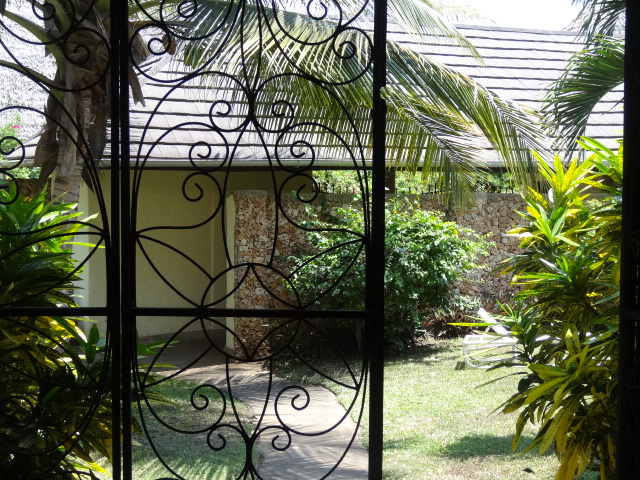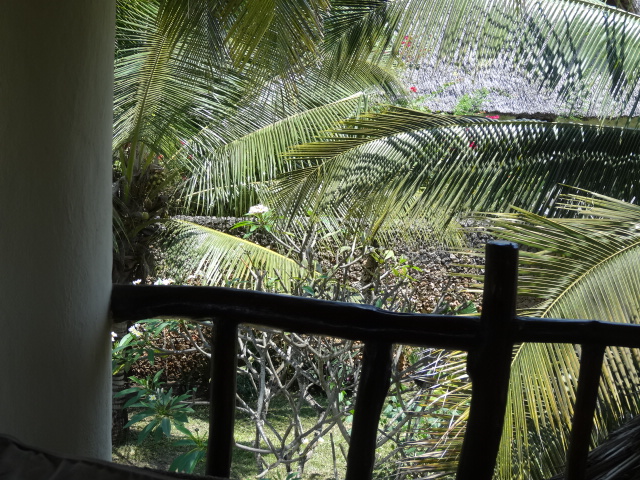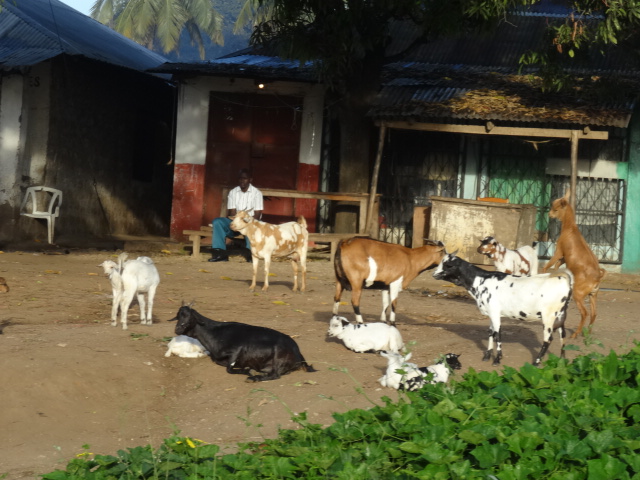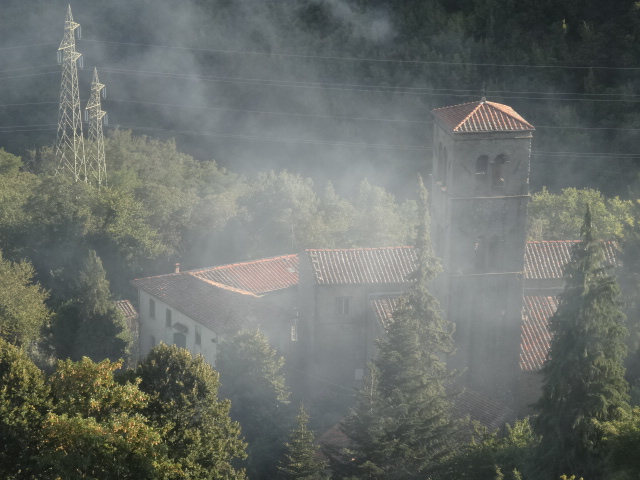 |
| This worker was making the smaller rebar pieces to be used in the ongoing construction. |
 |
| A Maasi guard at the property. Often the Maasia are the subject of photos taken by tourists. This can be annoying for them. Some tourists may offer a smalltoken of cash for the opportunity to take their photos. This guard had no exception to the photo since he was on duty working for Hans. As Hans’ guests he made no objection. |
white beaches, the palm trees and the African way of life. The holiday resort
is situated on the Indian Ocean in Diani Beach, 30km south of Mombasa. The
proximity to the beach makes this property extremely desirable. On a beautiful
5000 sqm big plot in the heart of Diani Beach this apartment resort is
developing.”
 |
| Mining the coral from the property’s ground by hammer and chisel method is backbreaking work in the heat but a necessary method to keep costs down. |
 |
| On the second level, we shot this photo of the future verandas, again supported by tree trunks and branches derived from the land when it was cleared for construction. This wood won’t be destroyed at completion of the project but re-used in a multitude of ways. |
 |
| The raw materials for making the rebar needed during construction. |
 |
| The workers were enthusiastic to show us how they make the rebar, ensuring they were in proper position as we took the photos. Check out that smile! |
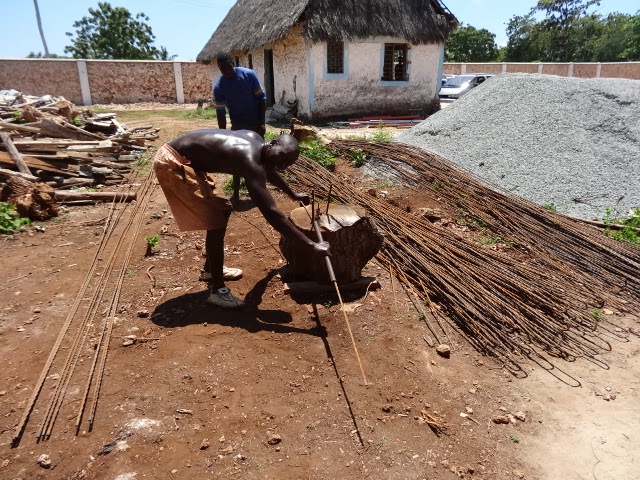 |
| Pride in their work was evident in every aspect of the construction site. |
 |
| Notice the bar was straight in the prior photo, now bent to accommodate the use of the bar in the construction. Brute strength was employed as is evidenced in these photos. |
 |
| One of many final rebar structures, carefully crafted by hand. |
 |
| The beginning of the future septic system. It was much larger than it appeared in this photo. There is no city sewer and water in Kenya |
 |
| Tom bent over this hole for the future well while I stood cautiously behind him. In a prior post, I’d mentioned a shortage of water incorrectly. Hans explained that Kenya is rich in an underground water supply which homeowners and business owners are able to tap into. Apparently, the private well water is drinkable, although salty from the sea. Thus, we’ve chosen to use bottled water for drinking, cooking and brushing our teeth. The well water is clear and clean for showering, laundry and washing dishes. |
 |
| This long narrow building will house security personnel, a spa with private massage and treatment rooms and various storage areas for maintenance. |
 |
| The septic system. |
 |
| As a few details near completion we were able to see this partially completed window. Every aspect of building, results in higher costs due to added security features. |
 |
| As we pulled away from the project, Tom alerted to me to grab the camera. The battery almost dead, I was able to get this parting shot of cows walking along the road, a common occurrence in Kenya, new to us.
We’d hope to have included architectural renderings of the units but with their huge data size, we were unable to upload them. In any case, our experience gave us an opportunity to observe first hand the work ethic of many of the local citizens, eager to provide for their families and to build a life for themselves.
Unfortunately, the unemployment rate in Kenya exceeds 25%, the majority of which is young people. These stats may be higher due to the unreliable nature of determining the stats of tribes that provide for themselves living off the land.
To see firsthand that one person, such as Hans, has the ability to create a work opportunity for the lives of 50 or more local workers, although small, reaches out to the lives when including their family members.
Wages are low but its obvious that the Kenyan people, when given an opportunity, are creative and resourceful.
Thanks Hans, for sharing this day with us and ultimately, our readers.
Busy weekend upcoming. We’ll be back with more stories and photos.
Thanks for reading!
|





















































































